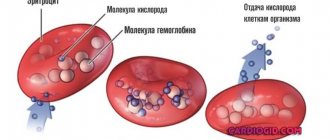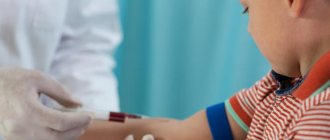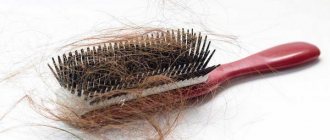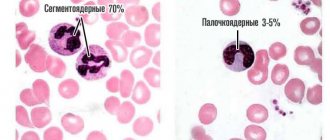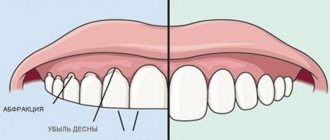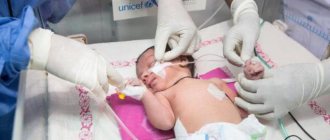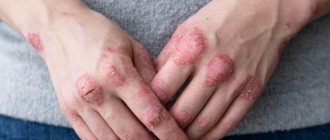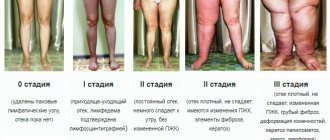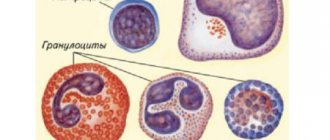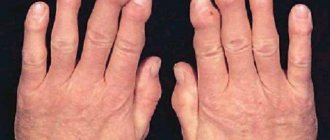Pediatrician
Sayfulina
Maryam Zakareevna
31 years of experience
Pediatrician of the highest category, member of the Union of Pediatricians of Russia
Make an appointment
Miliaria in children under one year of age and older is a fairly common skin lesion, which is a rash caused by severe sweating or poor care of the child’s delicate skin. It is important to understand that the baby’s thermoregulation processes are not yet perfectly established, and therefore the slightest negative factors can cause an undesirable reaction - parents should not be scared and think that this is a rare phenomenon. Almost all kids go through this.
However, you shouldn’t treat this problem negligently either: ordinary heat rash without treatment tends to become more complicated and worse, and in this case, longer and more complex treatment will be required - it’s better not to let it get to that point.
Symptoms
Symptoms of prickly heat in children include:
- The appearance of a characteristic rash on the neck, in the ear area, on the back of the head, along the hairline, armpits, in the upper chest, as well as on the back, in the groin folds and on the buttocks.
- Small rashes in the form of bubbles with transparent contents. In more complex cases, these are reddish nodules with an inflamed rim. The rash reacts to temperature, so it can decrease or increase depending on the environment.
- Weeping lesions - they occur when there is extensive damage to the skin.
- Pustules, swelling, redness of the skin and a putrid odor. This is not so much a symptom of prickly heat in children, but a signal that a bacterial or fungal infection has joined it.
- Soreness, itching and other unpleasant sensations that cause anxiety in the child make him capricious. This is not observed with ordinary heat rash, but if the condition is complicated, such negative factors will progress, simultaneously causing an increase in body temperature.
At any stage of heat rash in a child, even if it is very mild, it is necessary to consult a pediatrician. If complications arise, you should immediately consult a doctor - such issues are dealt with either by a pediatrician or a pediatric dermatologist.
Mechanism of development of prickly heat
An increase in body temperature leads to the activation of protective mechanisms for cooling it - the pores open and sweat appears, which cools the body.
If the sweat glands are clogged with sebum, cosmetics, or if the air is humid and hot, then the sweating process suffers. Sweat evaporates slowly, causing skin irritation.
Sweat contains salts and biologically active substances that can have an irritating effect on the skin. If excess sweat is not removed in a timely manner, the microbes that are always there begin to actively multiply on the skin - the process of inflammation of the sweat glands occurs - prickly heat, a small rash, is formed, accompanied by various subjective unpleasant symptoms.
Causes
The main cause of heat rash in a child is overheating, and it is caused by various factors, including:
- Too warm, and synthetic clothes at that.
- Untimely changing of diapers, especially in hot weather or in a warm room.
- A minimal amount of air baths and infrequent bathing, due to which the skin is not cleansed and does not breathe.
- Using cosmetics that are too oily and thick on the skin, which does not allow heat to be released properly.
- Diseases associated with fever. Especially if parents also use warming treatment methods.
To overheating we will add such factors as allergies to various materials, friction and pressure of clothing, effect on irritated areas of feces and urine.
It may seem that the causes of heat rash in children are due solely to parental care errors, but this is absolutely not the case. There are children who themselves are prone to developing this condition. These are allergy sufferers, overweight children, children with various endocrine diseases (for example, diabetes). Also at risk are formula-fed children and premature newborns. When caring for such babies, you should be especially attentive to the condition of the skin and body.
Rashes in babies
Babies are generous with various rashes. According to the “good” tradition, most of them are considered allergic with all the consequences - a strict diet for a nursing mother, transfer to artificial feeding, prescription of medicinal mixtures, etc. In fact, true allergic rashes in infants are not that common. Allergic diseases affecting the skin in infants include: atopic dermatitis, acute urticaria and Quincke's edema. Acute urticaria is extremely rare in infants - it is an acute allergic reaction in the form of peculiar blistering-type rashes (like a nettle burn, hence the name), which suddenly appear on the skin and just as suddenly disappear without leaving any trace behind, usually do not exist on the skin for longer than a day and are accompanied by severe itching, which manifests itself in the child’s general anxiety. The most common causes are food proteins (for example, cow's milk), viral infections, insect bites and medications (for example, antibiotics). In severe cases, it may be accompanied by swelling and redness of the soft tissues of the face, neck, larynx, arms, legs, genitals or abdominal cavity - Quincke's edema, which requires immediate medical attention.
Let's figure out what is most often unfairly called an allergy:
Erythema toxicum of newborns is a transient, benign rash whose exact cause is unknown (possibly due to skin irritation by environmental factors).
Appears at birth or in the first 24–48 hours of life. Localization - face, torso, limbs, except palms and soles. Disappears on its own within 5–7 days, sometimes 3 weeks. Does not require treatment.
Newborn acne (infantile acne, neonatal pustulosis) is caused by stimulation of the baby's sebaceous glands by androgens.
The peak of rash occurs in the 3rd week of life. It is most often localized on the face, sometimes spreading to the scalp, less often to the collar area. Resolve spontaneously. The skin requires cleansing and moisturizing; in some cases, the use of medicated creams may be required.
Miliaria is a rash that occurs in poorly “ventilated” areas as a result of blocked sweat glands. Can occur at any age.
Localization - folds of skin, buttocks and back surface of the body, sometimes the face (after sleep). Depending on the depth of the lesion, there are crystalline prickly heat, prickly heat, deep prickly heat (superficial).
The duration of the rash ranges from several hours to several days.
Treatment - cool water baths, air baths, prevention of overheating. Calamine-containing lotions and corticosteroid and antibiotic creams may be used to treat some cases of prickly heat and miliaria.
Seborrheic dermatitis is a skin disorder that forms on sebum-rich areas of the skin. The exact cause is unknown (a certain role is played by the skin saprophyte - the Malassezia fungus, which grows well and multiplies in sebaceous secretions).
It can be focal or widespread, dermatitis with pityriasis-like scales, which can form a crust (“cap”, gneiss) on the scalp.
Favorite localization is the scalp, face, folds (!).
It can begin from the 1st - 2nd week of life or later, and resolves spontaneously over several weeks or months.
Treatment involves softening the crusts with oil or cream and then removing them, moisturizing the skin and, in some cases, applying antifungal and anti-inflammatory creams.
Simple contact dermatitis is a nonspecific damage to the skin due to prolonged or repeated exposure to a number of substances - saliva, fruit juices, foaming bath products, detergents (their residue on the walls of the bathtub), etc. In infants, saliva often causes dermatitis in the contact area with the pacifier and in the folds of the neck.
As a rule, elimination of the offending agent and short-term administration of anti-inflammatory creams quickly leads to recovery, but some children are so sensitive that it is almost impossible to identify the causative factor.
Diaper dermatitis (a prototype of contact dermatitis) is a skin lesion that occurs under the influence of physical (overheating), chemical, enzymatic (contact with sweat, urine and feces) and microbial factors. Localization - area of the diaper or diaper area.
Treatment is carried out using the abbreviation ABCDE (air, barrier, cleansing, diaper, education). Frequently changing diapers, washing the skin and drying it thoroughly helps. Dermatitis is effectively prevented by applying products to clean skin that completely cover it (vaseline, zinc paste). In persistent cases, medicated creams containing corticosteroids, antibiotics, or antifungals may be recommended.
And now a few words about AD:
Atopic dermatitis is a chronic allergic inflammation of the skin, genetically determined, associated with loss of the skin barrier and, therefore, accompanied by dryness, itching and various rashes. In a third (!) of cases it is combined with food allergies (the most common “culprits” are cow’s milk, chicken eggs, wheat, fish, soy, nuts).
Most often it starts no earlier than 3 months of life.
The most common localization up to 2–3 years is the face (cheeks, forehead, chin), convex parts of the limbs (extensor surfaces) and the torso; it never occurs in folds in infants (!).
Exacerbations are triggered by various factors - stress, dry air, sweat, food (histamine liberators), infections, contact with tobacco smoke, animal hair, rough fabric, detergent residues on clothes, etc.
It is treated with careful skin care and the use of anti-inflammatory creams.
There are also:
Pseudoallergic reactions are reactions that are externally similar to allergic ones (for example, various rashes), but are not such, due to the non-immune mechanism of their development.
The reason is the increased content of histamine (tyramine, serotonin) in foods, or the ability of foods to enhance the release of these substances in the body, or their increased absorption, due to pathology of the gastrointestinal tract (enzymopathies, inflammation in the intestinal wall, etc.). These products include chocolate, cocoa, strawberries, citrus fruits, honey, sauerkraut, marinades and spices, seafood, fish, caviar, pork, mushrooms, cheeses, nuts, smoked meats, preservatives, dyes and flavor enhancers.
Treatment includes dietary advice, skin care, and in some cases, antihistamines and anti-inflammatory creams.
The clinical manifestations of atopic dermatitis, simple contact dermatitis in highly sensitive children and the manifestation of pseudo-allergic reactions are very similar to each other, so the main task remains the creation of a “skin barrier” by constantly moisturizing the skin with emollients, stopping exacerbations with anti-inflammatory creams and excluding exacerbation factors.
And the last thing:
Skin infections - herpes virus, staphylococcal pemphigus, candidiasis also occur in infants, do not forget about them. You should consult a doctor immediately if the child is lethargic, has a fever, refuses the breast or bottle, skin rashes are accompanied by pus or are covered with purulent crusts, there are blisters or a group of blisters, erosion (violation of skin integrity), severe swelling and redness of the skin.
Author:
Eroshkina Maria Sergeevna pediatrician
Diagnostics
A pediatric dermatologist or pediatrician will examine the child and interview the parents, as well as a series of studies to rule out dermatitis, chickenpox, scarlet fever and many other diseases with similar symptoms. Most often, a visual examination is enough, but tests (scraping) may be required to help identify the causative agent of a secondary infection (if one is observed). A general and biochemical blood test is often done, as well as an analysis of the contents of the vesicles - it all depends on the recommendations of the attending physician.
Prickly heat on the head of an adult
Miliaria in adults is a fairly rare occurrence. It manifests itself in the form of red, swollen blisters, most often in places where clothing comes into contact with the skin and occurs due to the presence of hair. This creates a greenhouse effect.
Causes of prickly heat on the head in an adult
- increased sweating, which may be a manifestation of hyperhidrosis. This disease occurs when the apocrine glands malfunction. Such people suffer chronically from prickly heat;
- diseases of the endocrine system, such as diabetes, hyper- and hypothyroidism;
- obesity;
- diseases of the cardiovascular system;
- high body temperature;
- patients who are forced to spend all their time lying down;
- intense physical work;
- hot weather and dry climate;
- high indoor humidity;
- insufficient scalp hygiene.
Types of prickly heat in adults
- Crystalline - in the form of red small bubbles, located separately from each other or merging together. The most harmless type of prickly heat. It may go away on its own if the provoking factor is eliminated. Occurs more often on the neck, forehead, face;
- Red – in addition to red blisters, inflammation appears. This type is most often localized in the armpits, abdomen, and groin. Does not go away on its own;
- Papular is the next stage after prickly heat. Characterized by the formation of vesiculo-papules. Swelling, pain and redness are observed in the area of the affected skin. The temperature may rise slightly;
- Apocrine – occurs with hyperhidrosis due to impaired functioning of the apocrine glands. It is characterized by the presence of infiltrate due to the fact that the bubbles burst deep in the skin. May be complicated by infection.
Treatment
Usually, treatment of prickly heat in a child is carried out comprehensively and includes the following points:
- Maintaining optimal temperature in the house - no more than 20-22 degrees Celsius. The same goes for humidity, which needs to be monitored - 50-70%.
- The right choice of clothes. It must be appropriate for the temperature and not be synthetic or too dense.
- Regular hygiene procedures - washing, bathing using gentle cosmetics designed specifically for children's delicate skin.
- Regular diaper changes. Your baby's skin should always be clean and dry.
- Use of medications and other means prescribed by a doctor. Sometimes decoctions of medicinal herbs are allowed, but only when the doctor allows it. For the rest, specially selected ointments, powders and other medications are used. In difficult cases, antifungal drugs and antibiotic-based ointments can be used - but parents should not purchase such products on their own.
As a rule, when prickly heat appears in a child, the prognosis is good. After establishing hygiene procedures, the problem disappears quite quickly. If the baby’s immunity is severely weakened, and a dangerous infection develops against the background of prickly heat, there is a risk of complications. In this case, the treatment will be longer and more complex, and in exceptional cases it will require hospitalization of the child.
If your baby exhibits symptoms of infant heat rash, do not wait until complications begin - be sure to contact pediatricians or dermatologists at Meditsina JSC - get examined by a doctor, get an accurate diagnosis and an effective treatment plan.
What you should never do if you have heat rash in a child
Before visiting specialists, many parents try to help their child on their own and use various tips from the Internet. This should not be done under any circumstances. We have compiled a short list of what is prohibited:
- Squeeze and open the blisters on the baby’s skin.
- Cover inflammations and blisters with iodine or brilliant green, as well as other aggressive agents.
- Moisturize the skin with any available means. Heavy moisturizing creams are often used, which in this case are strictly contraindicated.
- Dry wet areas with rough materials or sudden movements. If it is necessary to remove moisture, this is done with very clean, soft and highly absorbent material - with extremely careful and smooth movements.
But it is best to immediately visit a doctor and get detailed advice about what you can and cannot do.
How to treat prickly heat
If the disease in crystalline form can still be dealt with at home, it is better to deal with the rest under the supervision of a specialist. If you consult a doctor in a timely manner, treatment of prickly heat does not take much time and will eliminate complications.
An integrated approach includes:
- Elimination of provoking factors - correction of skin care and hyperhidrosis, change of cosmetics and switching to natural fabrics.
- Selection of drugs for the treatment of prickly heat - ointments, antiseptics, powders, creams.
- If rashes appear, you need to contact a dermatologist who will determine their cause and know how to get rid of heat rash of any form. This will help avoid the development of a strong inflammatory process, infection and the prescription of antibacterial agents.
What is prickly heat and why does it occur?
This is exactly the case when the name of the disease speaks for itself. Miliaria occurs when a person sweats frequently. At the same time, the excretory ducts of the sweat glands become blocked and a rash appears. Most often, the disease manifests itself in closed areas of the body - on the back, neck, legs, buttocks, armpits, and also in skin folds. If parents put a hat on their baby that is out of season, heat rash can appear on the head and even on the face, especially in those places where hair falls on the skin.
| Our expert Polina Vasilyeva dermatologist |
| Most often, heat rash can be noticed in those places on the body where it is damp and warm, primarily under the diaper. Heat rash also affects areas of the skin that have difficult access to air - the neck, upper chest, back, crooks of the arms and legs, armpits, lower back, behind the ears and in various skin folds. |
Miliaria occurs not only in children, but in adults too, but much less frequently. The reasons are quite obvious. Firstly, the baby's skin is softer and thinner. Secondly, the thermoregulation of a child under one year old is very far from ideal - he easily becomes hypothermic and even more easily overheats. Finally, an adult is able to understand that he is hot and take off excess clothes, but a newborn is completely dependent on the will of his parents. That is why the likelihood of heat rash in a one-month-old baby is much higher.
| Our expert |
